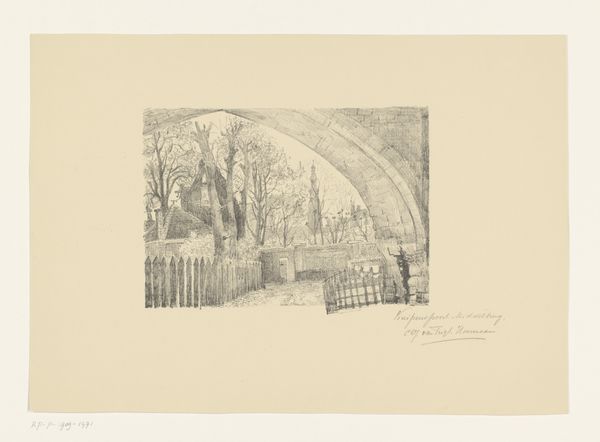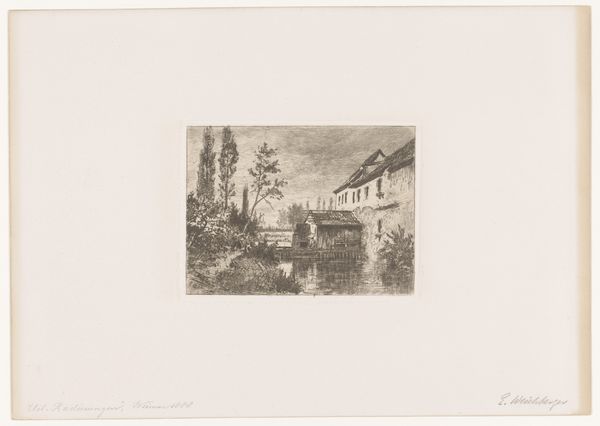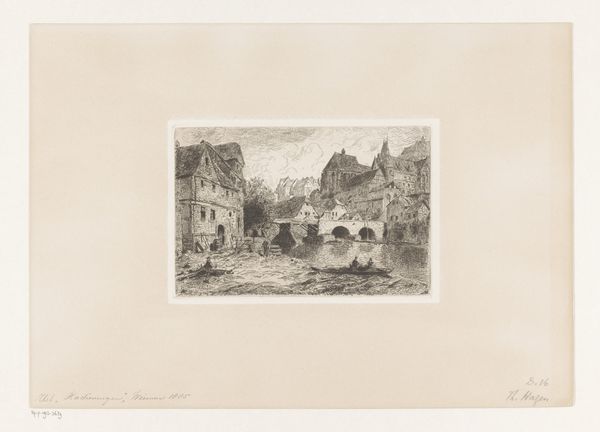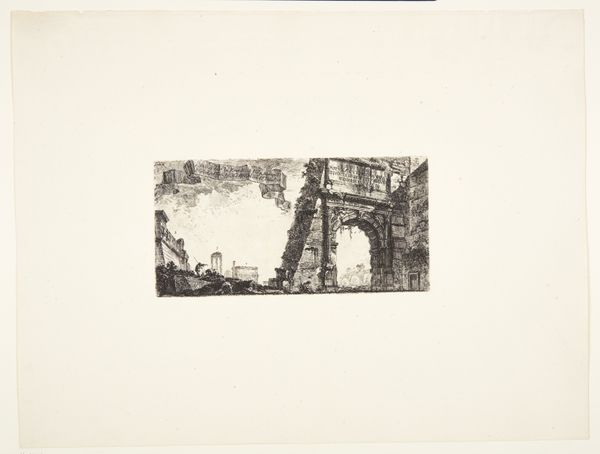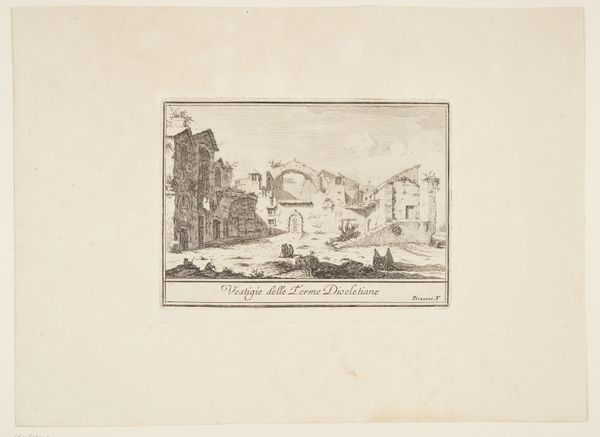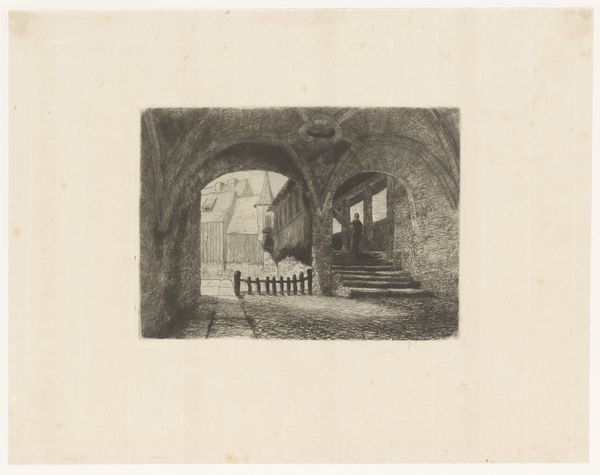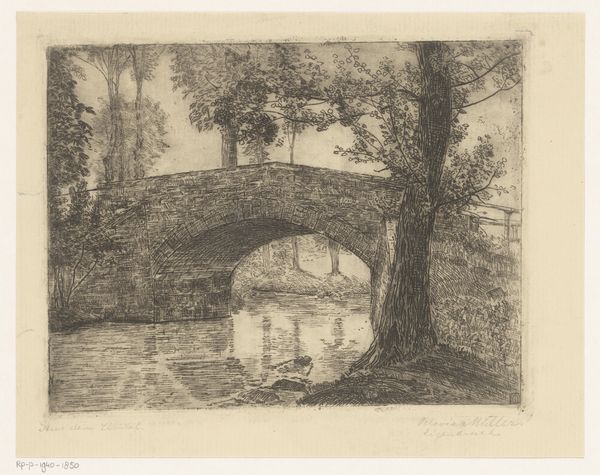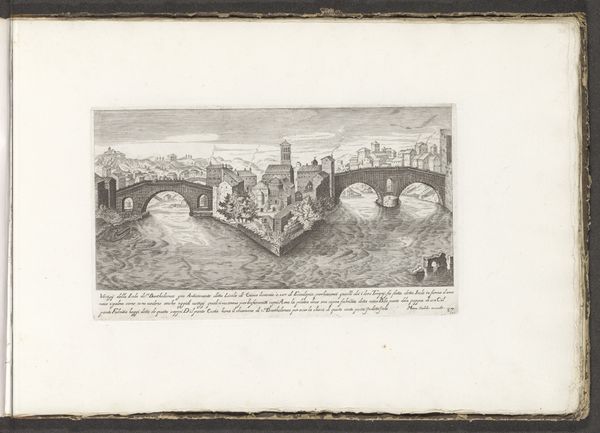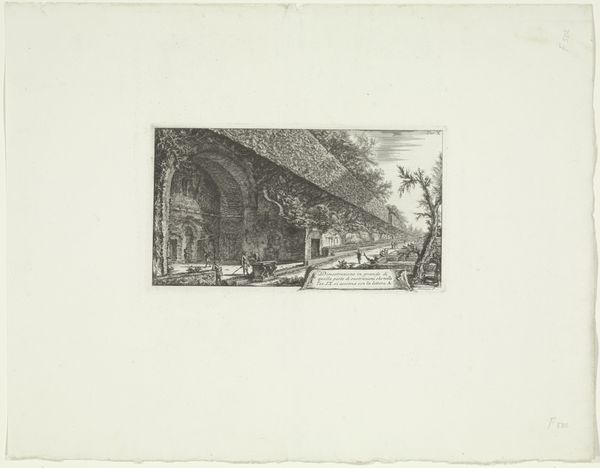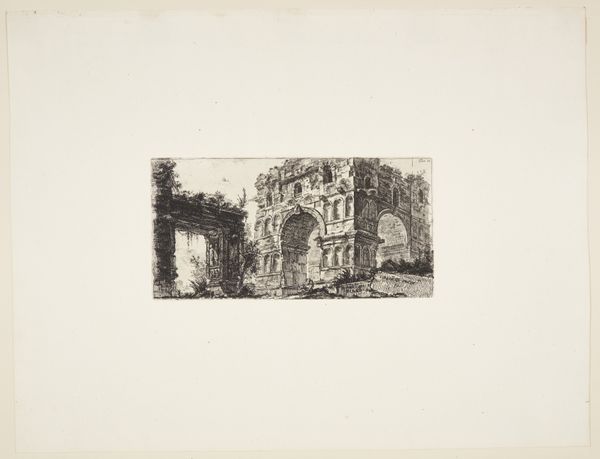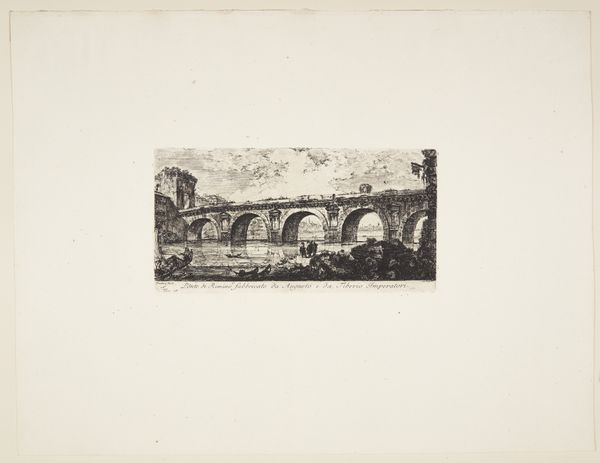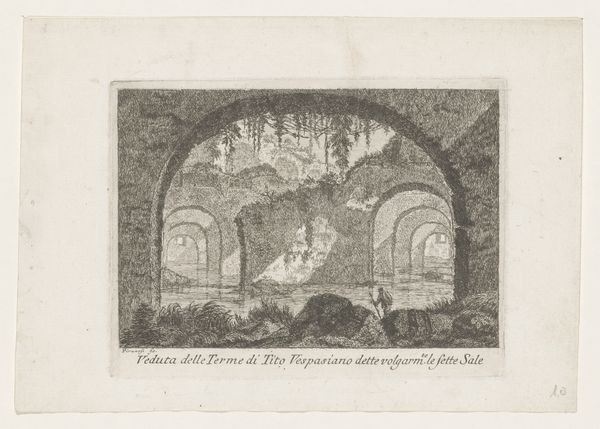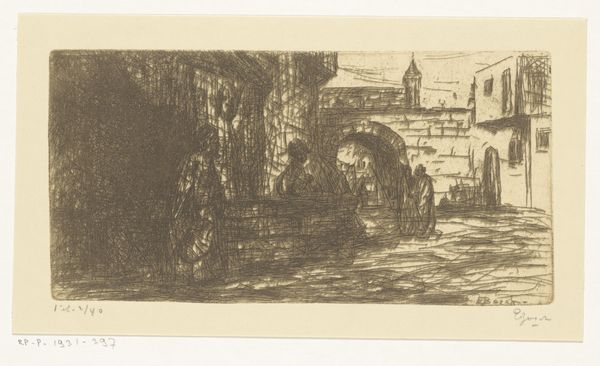
print, etching
#
dutch-golden-age
# print
#
etching
#
landscape
#
cityscape
Dimensions: height 81 mm, width 132 mm
Copyright: Rijks Museum: Open Domain
Editor: This is "Gezicht op een brug in Heemstede," a print – an etching, to be precise – by W. Rus, dating from before 1925. I’m immediately drawn to the contrast between the solidity of the bridge and the almost hazy rendering of the rest of the scene. What formal elements strike you as most significant in this work? Curator: The piece hinges on a play of textures achieved through varying densities of etched lines. Notice how the artist uses closely packed, almost chaotic lines to depict foliage and distant buildings, contrasting sharply with the smoother surfaces of the bridge and the water below. This textural dichotomy guides the eye. Editor: So, it's all about how the artist manipulates the etching technique itself? Curator: Precisely. The composition relies on creating a sense of depth through linear perspective, yes, but more importantly, by strategically deploying light and shadow with this specific technique. Observe how the dark accents around the bridge emphasize its architectural form, making it the focal point against the lighter background. Editor: I see that now. The bridge becomes almost sculptural because of the line work. Do you think there's any symbolism intended, with the bridge as a passage from light to shadow? Curator: While a symbolic reading isn't out of the question, formalistically we can see that this directional contrast underscores its presence within the frame and guides our viewing. Note how its shape subtly reflects in the water. How might that reflection change how the work operates? Editor: I didn’t notice that before. It’s not a direct copy; the reflections appear intentionally muddied and abstract, making me reconsider how light and form can create an experience. Thank you. Curator: A close look reveals the formal mastery over the etching medium in representing the scene through structure.
Comments
No comments
Be the first to comment and join the conversation on the ultimate creative platform.
